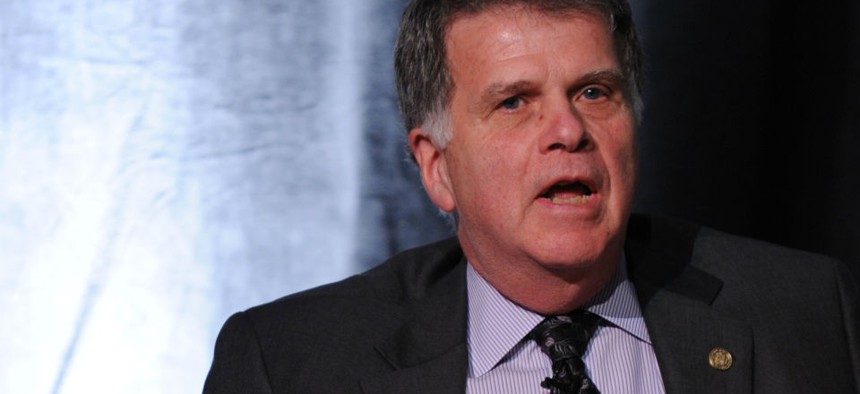
Archivist of the United States David Ferriero Flickr user Kim Walker/Elon University
National Archives Chief Outlines 80-Year Cleanup Job
Emails from the Obama administration have topped 1 billion.
Eighty years ago, when the National Archives and Records Administration first opened, the chief archivist encountered a sight suggesting that the agency had its work cut out for it.
“Valuable records were found in a depository piled on dust-covered shelves mingled higgledy-piggledy with empty whiskey bottles and with rags and other highly inflammable trash,” Robert Connor wrote in the 1930s. At another site, “the most prominent object which meets the eye as one enters the room is a cat protruding from under a pile of valuable records.”
This weekend, that disturbing vision was evoked by current Archivist of the United States David Ferriero in a talk dramatizing the agency’s expansion over the decades into the digital age. He spoke in Savannah, Ga., to the Society of the Cincinnati in the State of Georgia, a constituent branch of the organization of descendants of officers of the Continental Army founded at the end of the Revolutionary War in 1783.
The National Archives, Ferriero noted, houses 12 billion pieces of paper and parchment, enough to circle the Earth 84 times and to have cost Mother Nature 1.5 million trees. In addition to 40 million photographs and “miles” of movies and video, the agency curates—with greater space-efficiency using the cloud – 5 billion electronic records. The “textual records grow by half a billion records each year,” Ferriero said.
Back in 1955, then-chief Archivist Wayne Grover marveled that the government “in the 22 years from 1930 to 1952, should have created more than seven times as many records as it did during its previous 155 years of history,” Ferriero said, setting the context for today’s accelerated pace. “We started collecting email during the Ronald Reagan administration. Between Reagan and Bush 41 we have 2.5 million email messages.” There are 20 million emails from the Clinton White House, 210 million from Bush 43, and recently, the Obama administration surpassed 1 billion emails, he said.
Profiling his agency for the audience of history enthusiasts, Ferriero noted that the National Archives employs a staff of 3,000 at 44 facilities to manage the records of 275 executive branch agencies, the White House and the Supreme Court. Records of Congress are kept “as a courtesy,” he said.
Staff also operate and maintain the 13 privately funded presidential libraries. President Franklin Roosevelt, the archivist added, was actively involved in setting the agency’s mission and designing its downtown building on Constitution Avenue. FDR was also the only president whose library opened while he was still in office, Ferriero said.
In addition to housing artifacts and biographical material from the chief executives, the presidential libraries hold regular conferences and outreach events to local schools and communities.
News reports this week have noted that the location of President Obama’s future library is being debated by localities and Obama’s staff. The candidates: Chicago, Hawaii and New York City.
(Image via Flickr user Kim Walker/Elon University)







